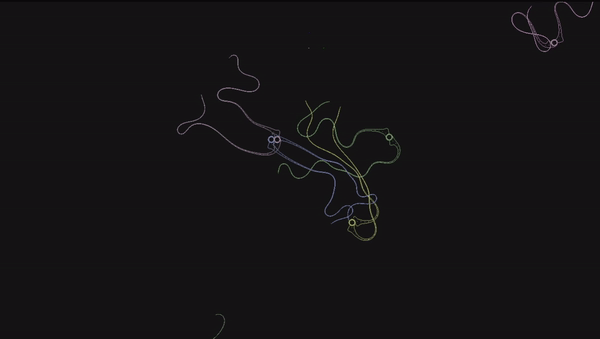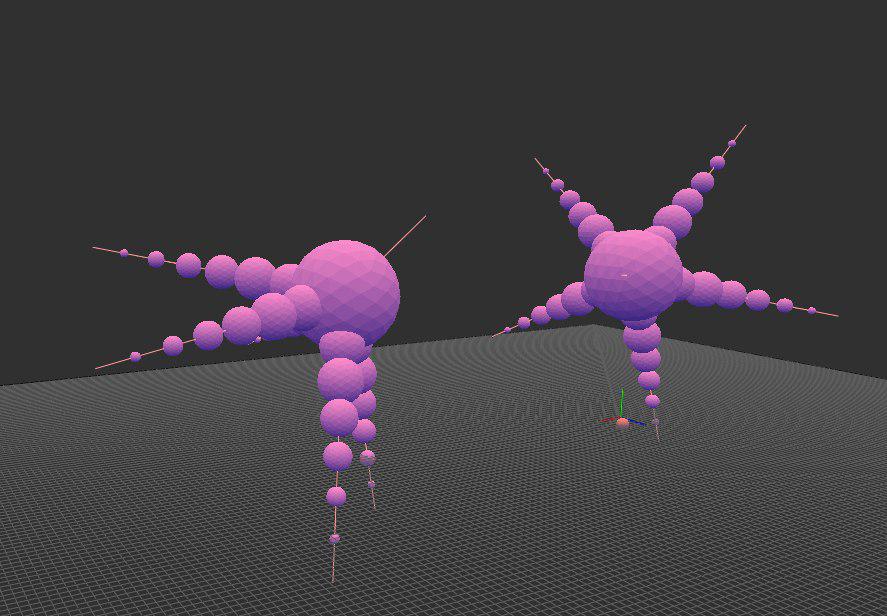
I follow with interest the topic of simulating living things by means of computer programs. Neural networks are making tremendous progress in digesting gigabytes of information.
Training neural networks, in terms of the required resources, has gone far from the average power of a desktop computer. Therefore, "toy" projects with fast feedback in terms of learning neural networks are always interesting. And best of all, the neural network itself and learns without noticeable efforts on the part of the developer. This spring I was pleasantly surprised to find Job Talle's article on the neuroevolution of squid.
A relatively short article contained both a description of the physical principles of movement of squid and a description of a spike neural network that I had never seen before, which sets the tentacles of squid in motion, and on top of this a genetic algorithm for the natural selection of the fittest individuals. What the article is about, rather about how I shod a flea.
Let's start with the sources:

Original article taken as a basis for programming squid (octopus)

Translation of the above article on Habré.
If the reader follows the links, he will find a detailed story (and its translation) about the implementation of neuroevolution on the example of squid. The result of the article will look like this:

or like this:

The article provides the source code and a link to the simulation run in the browser.
When everything is ready, told and shown, the question remains, how does this program actually work.
JavaScript ++. , . :


, 80- . .
:
, .
.
.

, , :

:
, :

, . .

:

:

2D, 3D , . :

:


, , . Bullet Physics Library:

, :

3D. , . , 3D . . .
, - "":

, "" . () , . ( ) . . , . . : 3D ? .